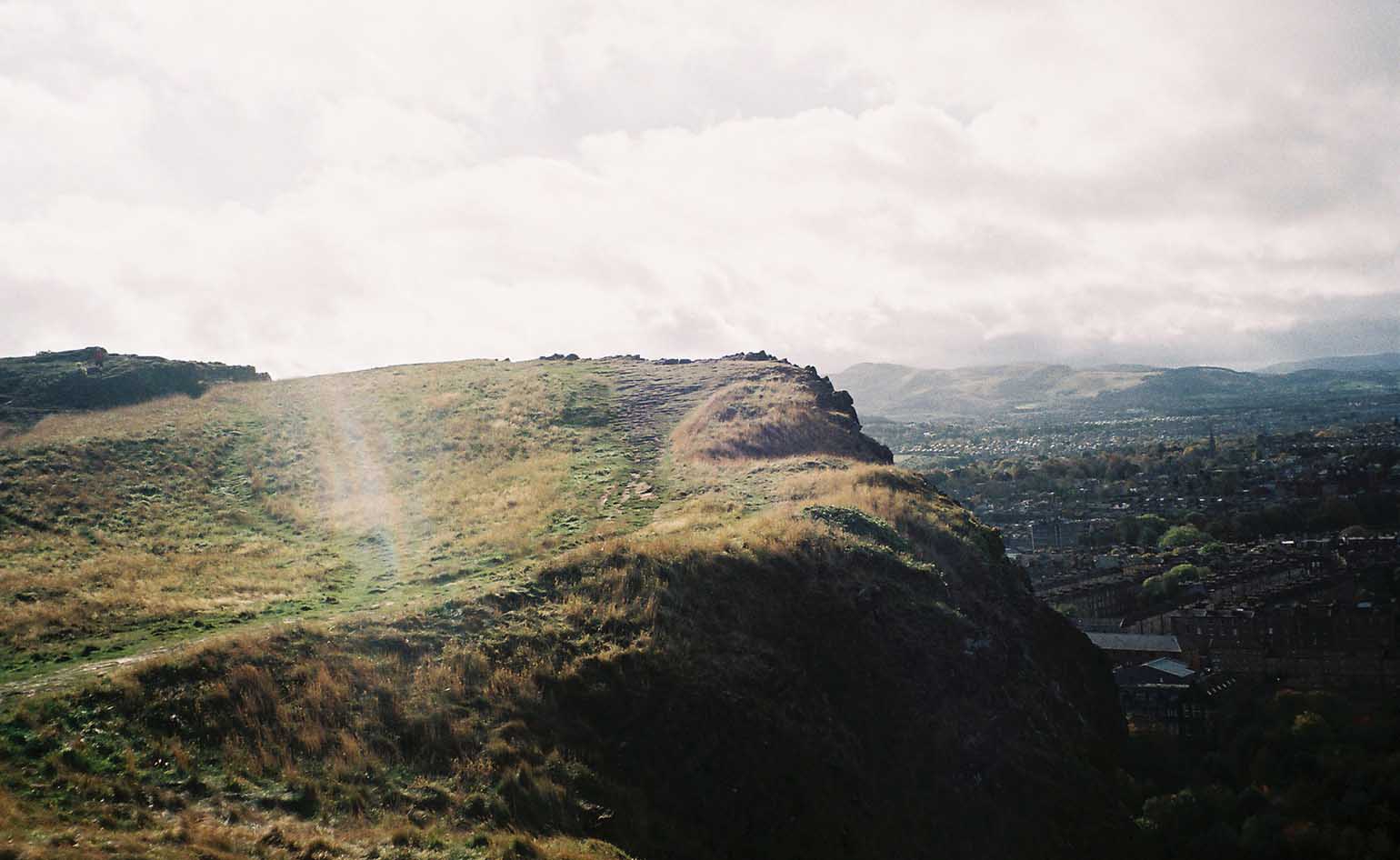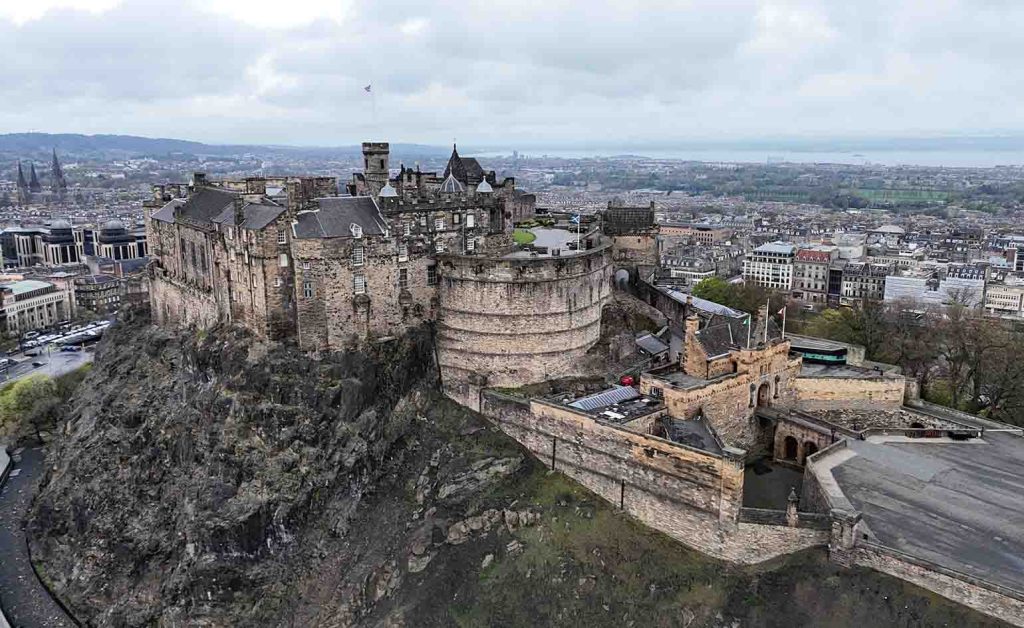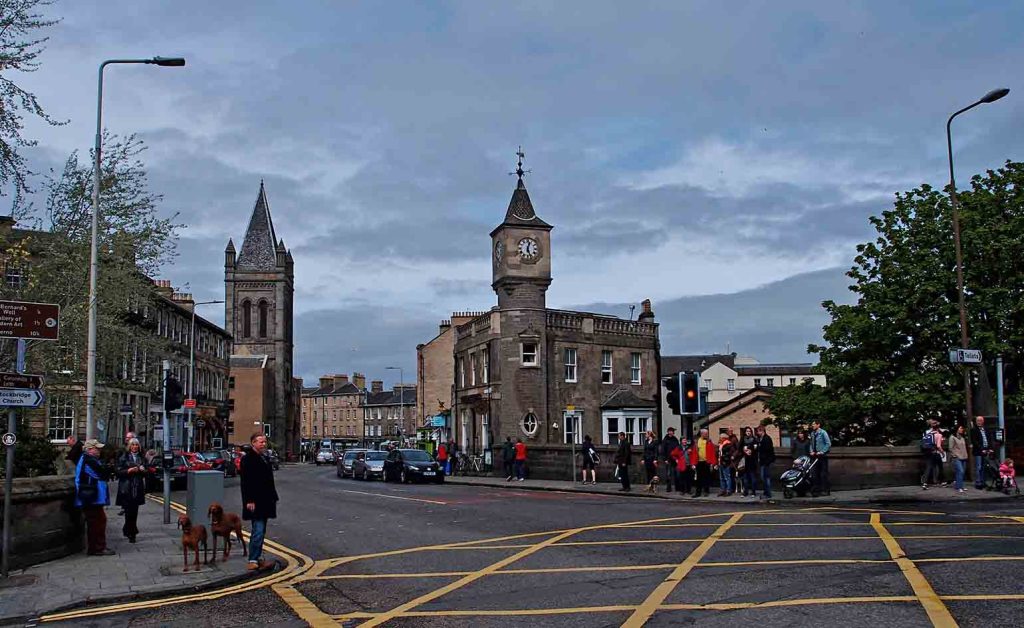
- by star
Edinburgh is a city that lingers in the imagination long after you’ve walked its cobbled streets. The Scottish capital is not just about castles and kilts—it is a layered city, with Gothic spires cutting the skyline, smoky pubs glowing with warmth, and neighborhoods that reveal stories at every corner. On this trip, I wanted to explore not just the classic tourist icons, but also the smaller, quieter places that give Edinburgh its soul. What follows is my personal journey through ten places that capture both the grandeur and intimacy of this unforgettable city.
1. Edinburgh Castle: The Timeless Icon
You cannot talk about Edinburgh without starting with the castle. Perched high on Castle Rock, the fortress dominates the skyline. Approaching it from the Royal Mile, I felt the weight of centuries pressing in. Once inside, the views across the city are staggering—you see the sweep of Princes Street, the curve of Arthur’s Seat, and the waters of the Firth of Forth glinting in the distance.
But the castle is more than a viewpoint. It holds the Crown Jewels of Scotland, the Stone of Destiny, and layers of military history. Standing in St. Margaret’s Chapel, the oldest surviving building in the city, I was struck by how small and intimate it felt, despite being part of such a colossal fortress. Edinburgh Castle is dramatic, yes, but it is also deeply human.

2. The Royal Mile: A Walk Through Time
Stretching from the castle down to Holyrood Palace, the Royal Mile is a spine of history. The street is alive with performers, bagpipers, whisky shops, and stone-clad closes that beckon you to step inside. What I loved most was ducking into those narrow closes—hidden alleyways that lead to courtyards or secret gardens.
One such close opened into a quiet square where a single musician was playing the fiddle. It felt a world away from the bustling main street, though only a few steps apart. The Royal Mile can feel touristy, but it is also a living museum, where medieval architecture and modern life coexist.
3. Arthur’s Seat: The City’s Wild Heart
For me, no visit to Edinburgh is complete without a hike up Arthur’s Seat, the extinct volcano that rises from Holyrood Park. The climb is steady rather than punishing, and the reward is a 360-degree view that sweeps across the city and far into the Highlands on a clear day.
What makes Arthur’s Seat magical is how wild it feels, despite being so close to the urban core. The gorse bushes, the rustle of grass, the sudden sight of a kestrel overhead—it’s a reminder that Edinburgh is a city shaped by nature as much as by stone.
4. Dean Village: A Step Into a Painting
Dean Village was once a milling community along the Water of Leith, and today it feels like a hidden pocket of calm. I wandered through cobblestone paths lined with quaint cottages, the river flowing gently below. It’s hard to believe this peaceful enclave is only a short walk from Princes Street.
The colorful houses and leafy riverbanks made me feel like I had stepped into a painting. While the castle draws the crowds, Dean Village offers the kind of quiet beauty that stays with you. It’s not a place to rush; it’s a place to wander slowly, letting the details emerge.
5. Calton Hill: Postcard Views and Monuments
Another vantage point not to be missed is Calton Hill. From here, the panorama of the city unfolds with the Dugald Stewart Monument in the foreground and the skyline beyond. It is a spot beloved by photographers, and for good reason—the sunsets here are legendary.
Calton Hill also has its share of curiosities: the unfinished National Monument, nicknamed “Edinburgh’s Disgrace,” resembles a fragment of the Parthenon. The Nelson Monument stands tall nearby, a reminder of Britain’s naval history. For me, it was the mix of grandeur and incompleteness that made Calton Hill so memorable.
6. The Scottish National Gallery: Art Amidst the City
Located just off Princes Street, the Scottish National Gallery is a treasure trove of art. Inside, I found myself face-to-face with works by Titian, Rembrandt, Turner, and Scottish painters like Raeburn. The building itself, with its neoclassical façade, feels like a temple to creativity.
What struck me most was the balance: the gallery is impressive, yet it’s intimate enough that you can enjoy the art without feeling overwhelmed. It’s a refuge in the middle of the city, a place to slow down and contemplate.
7. The Real Mary King’s Close: Stories Beneath the Streets
Edinburgh’s history is not just above ground—it’s below it too. The Real Mary King’s Close is a preserved network of 17th-century streets and rooms buried beneath the Royal Mile. Joining a guided tour, I walked through these shadowy passages, imagining the lives of merchants and families who once lived there.
The stories are equal parts eerie and fascinating, with tales of plague, trade, and survival. For me, this was one of the most unique experiences in the city—history not as a grand narrative, but as fragments of everyday lives frozen in time.
8. Stockbridge: Village Vibes in the City
A short walk north of the city center, Stockbridge feels like a different world. Its leafy streets, artisan bakeries, and weekend markets create a relaxed, village-like atmosphere. I spent an afternoon exploring its bookshops, sampling local cheeses, and chatting with vendors at the market.
Stockbridge also connects to the Water of Leith walkway, a scenic path that winds along the river. The neighborhood blends the charm of small-town life with the convenience of the city—an ideal spot for anyone who wants to slow the pace of their Edinburgh visit.

9. Greyfriars Kirkyard: Where History Meets Legend
Greyfriars Kirkyard is not just a cemetery; it’s a place thick with stories. Wandering among the gravestones, I found names that inspired characters in famous novels, as well as memorials that spoke of love and loss. Of course, the most famous tale here is that of Greyfriars Bobby, the loyal dog who guarded his master’s grave for years.
The kirkyard has an atmosphere that is both somber and strangely comforting. Standing among the mossy stones, I felt the weight of history but also a sense of continuity. It’s a reminder that Edinburgh’s stories are not just in books or museums—they are etched in stone.
10. The Scottish Storytelling Centre: Where Tradition Lives On
While Edinburgh is known for its festivals, storytelling is a year-round tradition. The Scottish Storytelling Centre on the Royal Mile celebrates this heritage with performances, workshops, and exhibitions. Sitting in its theater, listening to a storyteller weave a tale of folklore and myth, I felt connected to something ancient and enduring.
In a world dominated by screens, there was something powerful about the spoken word, about stories passed down through generations. The centre is not as famous as the castle or Arthur’s Seat, but it captures the cultural heartbeat of the city.
Reflections on the Journey
Edinburgh is a city of contrasts: grandeur and intimacy, history and modernity, wild landscapes and cozy neighborhoods. The ten places I visited are only a fraction of what the city offers, but together they reveal its essence in ways both tangible and emotional.
Edinburgh Castle, perched majestically above the city, is more than just an architectural marvel. Walking through its fortified walls, I could almost hear the echoes of centuries of battles and royal ceremonies. The Royal Mile, stretching down from the castle, is a living tapestry of history, lined with centuries-old buildings, quaint shops, and the aroma of traditional Scottish fare. Each street corner tells a story, and every step feels like walking through a living museum.
Yet, the city is not only about grand monuments. Arthur’s Seat offers a contrasting perspective—a wild, natural escape just minutes from the bustling streets. Climbing its rugged slopes, the panoramic view of the city below is breathtaking, a reminder that nature and tranquility are never far away. Dean Village, with its serene riverside paths and picturesque cottages, feels like stepping back into a timeless painting, a peaceful retreat where the pace of life slows down.
Art and culture are woven into Edinburgh’s very fabric. Calton Hill, with its iconic monuments, provides a striking vantage point over the city and a glimpse into its artistic sensibilities. Inside the National Gallery of Scotland, I wandered among masterpieces that span centuries, each piece reflecting the creative spirit that thrives here. Mary King’s Close, hidden beneath the city streets, and Greyfriars Kirkyard, with its quiet, moss-covered tombstones, offer a glimpse into the lives of ordinary people whose stories have been preserved in the shadows of history.
Beyond the classic attractions, Edinburgh’s neighborhoods reveal its vibrant, living culture. Stockbridge is a charming area where locals gather, offering a glimpse into daily life with cozy cafes, independent boutiques, and a welcoming atmosphere. The Scottish Storytelling Centre celebrates the oral traditions that are a cornerstone of Scottish culture, reminding visitors that stories are not only told—they are lived and shared.
Traveling through Edinburgh, I realized that it is not a city you simply see—it is a city you feel. Every corner holds a memory, every stone has a story, and every hidden alleyway invites you deeper into its mysteries. Whether you come for the classics or seek out the hidden gems, Edinburgh will always give you both. The city stays with you long after you leave, whispering its tales and leaving an indelible mark on your heart.